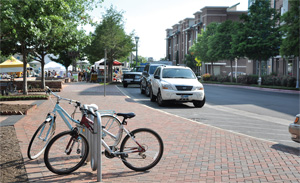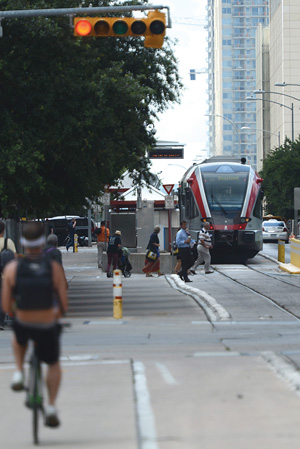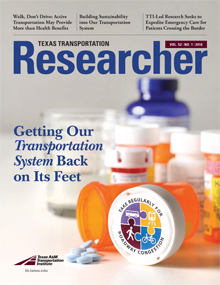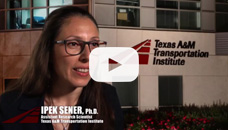In the United States, more people live in suburbs than in central cities, and suburbanites drive automobiles or rely on mass transit to get to and from work.
The construction of highways with multiple lanes and faster speed limits has been a common response to meet the growth of sprawling cities and the widespread ownership of private automobiles. This increased reliance on roadways has the unintended effect of creating additional demand and worsening urban sprawl by encouraging distance between residential and employment locations.

In most Texas cities, the options to walk or bike to work are very limited, especially when you consider the ground most travelers have to cover. But what if we had more options? What would that mean for our health and quality of life? And what would that mean for our transportation system?
Researchers at the Texas A&M Transportation Institute (TTI) are examining the effects of active transportation on quality of life. Active transportation refers to transportation modes that primarily use physical activity to move from one destination to another, usually by walking or bicycling.
TTI Assistant Research Scientist Ipek Sener explains, “It’s well recognized that active transportation can be a solution to a variety of transportation and health problems ranging from congestion to obesity. But there’s an added dimension to the story — when walking or biking, we have increased opportunities to be aware of the people around us, interact with our neighborhood, and be more attentive to our environment.”
The majority of Sener’s research has focused on understanding the factors influencing people’s activity-travel behavior, and predicting how individuals would react to different transportation, land-use and public-health policies.
Sener’s work has been published in several journals, including her recent technical article “Potential Health Implications and Health Cost Reductions of Transit-Induced Physical Activity” in the Journal of Transport and Health. The article reviews the associated health-cost benefits related to physical activity and transit use. According to Sener, transit use is associated with increased levels of physical activity and improved health outcomes, but the extent of these effects is uncertain.
The goal of these articles is to improve researchers’ understanding of the link between health and transportation in the context of various projects recognizing the benefits of active transportation.

As part of a five-year collaborative project with The University of Texas Health Science Center in Houston and funded by the National Institutes of Health, Sener and her colleagues are looking at how extending the Metropolitan Transit Authority of Harris County’s light-rail transit (LRT) lines affects the physical activity and travel behavior of Houstonians. Researchers are examining the effect on low-income, ethnically diverse adults residing along the new LRT lines. Now in year three of the project, the team has completed recruiting more than 800 participants and is collecting data for follow-up phases.
“My research deals with humans who are inherently affected by various emotional, physiological and social factors, as well as habits, inertia, attitudes and perceptions,” says Sener. “The first step in promoting active transportation is to better understand an individual’s choice to be active or not.”
As part of a larger multimodal project for El Paso, Sener and her colleagues are conducting several analyses to better understand active travel behavior. They’re looking at the factors, motivators and deterrents that influence decision making. Sener also emphasizes the importance of differentiating an individual’s needs and desires. “It’s important that we recognize an individual’s constraints and try to develop solutions for people who are willing to be active but do not have the opportunity,” she says.
“When you look at the population in the El Paso area, we have a very high rate of diabetes,” states Michael Medina, executive director of the El Paso Metropolitan Planning Organization. “And so if you’re able to identify a potential psychological perspective of why [citizens] pick a certain form of transit, what else would they need?”
Aside from the health benefits, other reasons exist for promoting active transportation — congestion management, air quality and energy dependency, to name a few. Fewer cars on the road mean less congestion, cleaner air and fuel conservation. We’re also running out of space to build new highways, an ever-increasing and cost-prohibitive strategy to expand roadway capacity.
Sener explains that due to the growing financial and social costs of highway-oriented transportation, it is no longer possible to simply rely on increasing roadway supply to meet demand. That calls for developing new strategies that better use the system we currently have.
“It’s essential that we look at alternative solutions in managing demand and responding to the adverse impacts of highway-oriented transportation solutions,” Sener says. “Active transportation enters the picture at this point since it lies at the heart of sustainable and integrated transportation systems needed for a better future.”

